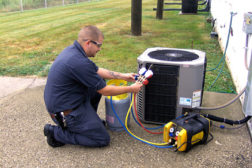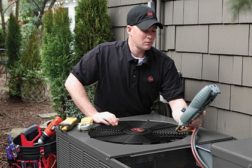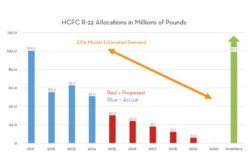Home » R-22 phaseout
Articles Tagged with ''R-22 phaseout''
R-22 Uncertainty Keeps Distributors on Edge
Industry Pushes for Aggressive Timeline as EPA Develops Final Rule
Read More
European Spotlight
R-22 Phase Out — HCFC’s Final Orders
Now is the Time to Act and Replace R-22
Read More
European Spotlight
R-22 Phase Out — HCFC’s Final Orders
Now Is the Time to Act and Replace R-22
Read More
Residential Regulations to Watch in 2014
DOE and EPA Expected to Continue High Level of Activity
Read More
Contractors Endure Regulatory Burden
Changing Regulations, Health Care Act Top List of Worries
Read More
Dec. 11, 2013: EPA Proposes Final Timeline for R-22 Refrigerant Phase Down
Proposal Picks Up on a Previous Production Timeline for 2013 and 2014
December 11, 2013
Copyright ©2024. All Rights Reserved BNP Media.
Design, CMS, Hosting & Web Development :: ePublishing












